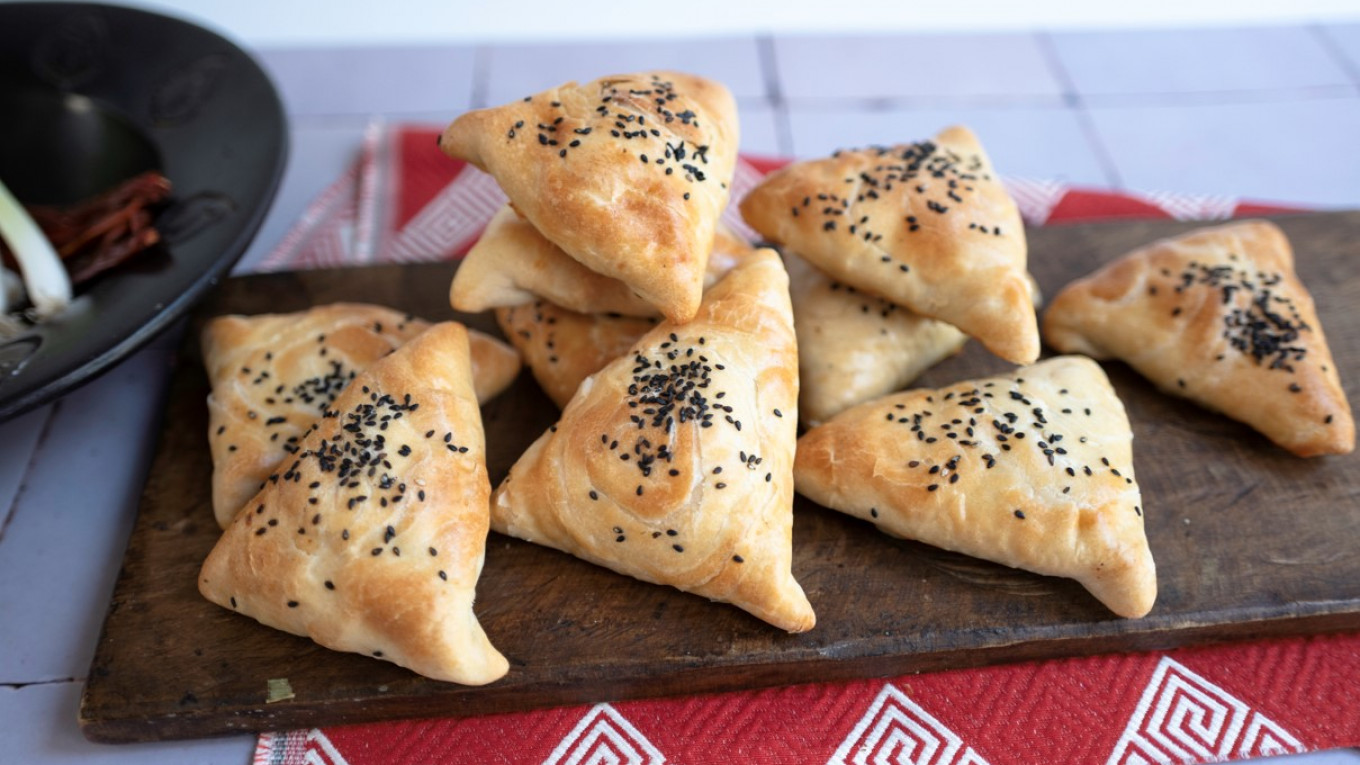It’s always a good idea to be wary of street food in the Former Soviet Union, but sometimes the intoxicating smells of yeasty pancakes, frying onions, or the pungent odor of grilled meat present almost irresistible temptation. I find this particularly challenging when it is cold and damp outside and those brightly colored trucks and kiosks, besides emitting tantalizing smells, also seem to pulse with life and warmth. I’m very susceptible to anything Caucasian or Central Asian — and the memory of one particular samsa stand at VDNKh in particular haunts me with its promise of flakey pastry and spicy lamb fillings.
“How hard could it be,” I wondered after this year’s first snowfall, “to construct a fantastic samsa at home?” As with anything dough-based, I am skittish, but once I get this kind of culinary challenge into my head, it is almost impossible not to see it through to the end. In no time, I was sifting the dry ingredients and musing on the long history of this beloved Central Asian snack.
What the pasty is to Cornwall, the empanada to the Hispanic world, and the iconic meat pie is to Australia, the samsa is to Central Asia: a delectable flakey yet chewy triangle of pastry stuffed with a richly spiced filling. Samsas are popular throughout Central Asia, where they are often cooked in large clay tandoor ovens. Uzbekistan proudly lays claim to samsas, but it is almost impossible to pinpoint their exact origins. The authoritative “Oxford Dictionary of Food” points convincingly to Persia as both the entomological and culinary origin of Central Asia’s beloved snack food: the Persian word “sanbosag” means “triangular pastry,” and the building blocks of Persian cuisine: lamb, rice, herbs, and spices, are still major parts of Uzbekistan’s cuisine today, a legacy of the region’s rule by the Persian Achaemenid Empire.
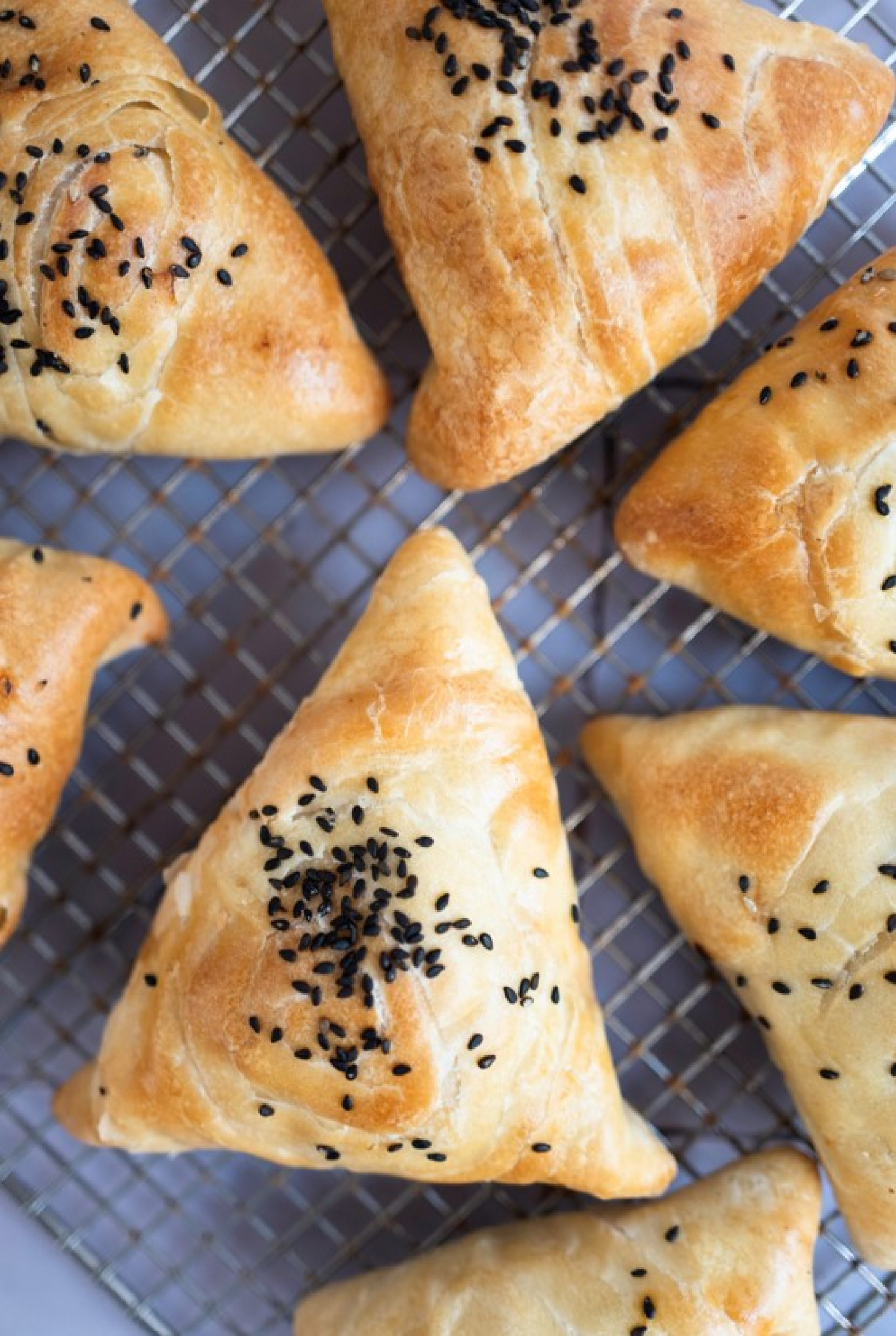
In Arabic cookery manuals, dating as far back as the 11th century, delectable pies filled with ground meat and nuts, herbs, and spices are called “sanbusaq,” still a word used for meat pastries in Syria, Egypt, and Lebanon today. Triangular samosas in India are clearly a close relation.
Light but very filling, samsas were (and remain) the ideal travel fare, their popularity growing as they traveled along that dynamic conduit of commerce, culture, and cuisine: the Silk Road. And like all good Uzbek dishes, they came eventually to Russia, when Central Asia was incorporated into the sprawling Russian empire in the 19th century. While samsa may not be as popular as piroshki in Moscow, Central Asia’s signature pastries enjoy wide popularity in the Russian capital thanks to its many excellent Uzbek restaurants, food kiosks, and trucks.
I love the texture of a samsa, which is just the right amount of chewy, and the hot fillings with their robust spices are always a delightful surprise. A large samsa makes a delicious lunch or hearty snack, and a plate of steaming samsas will always be hailed with enthusiasm at autumn and winter outdoor events.
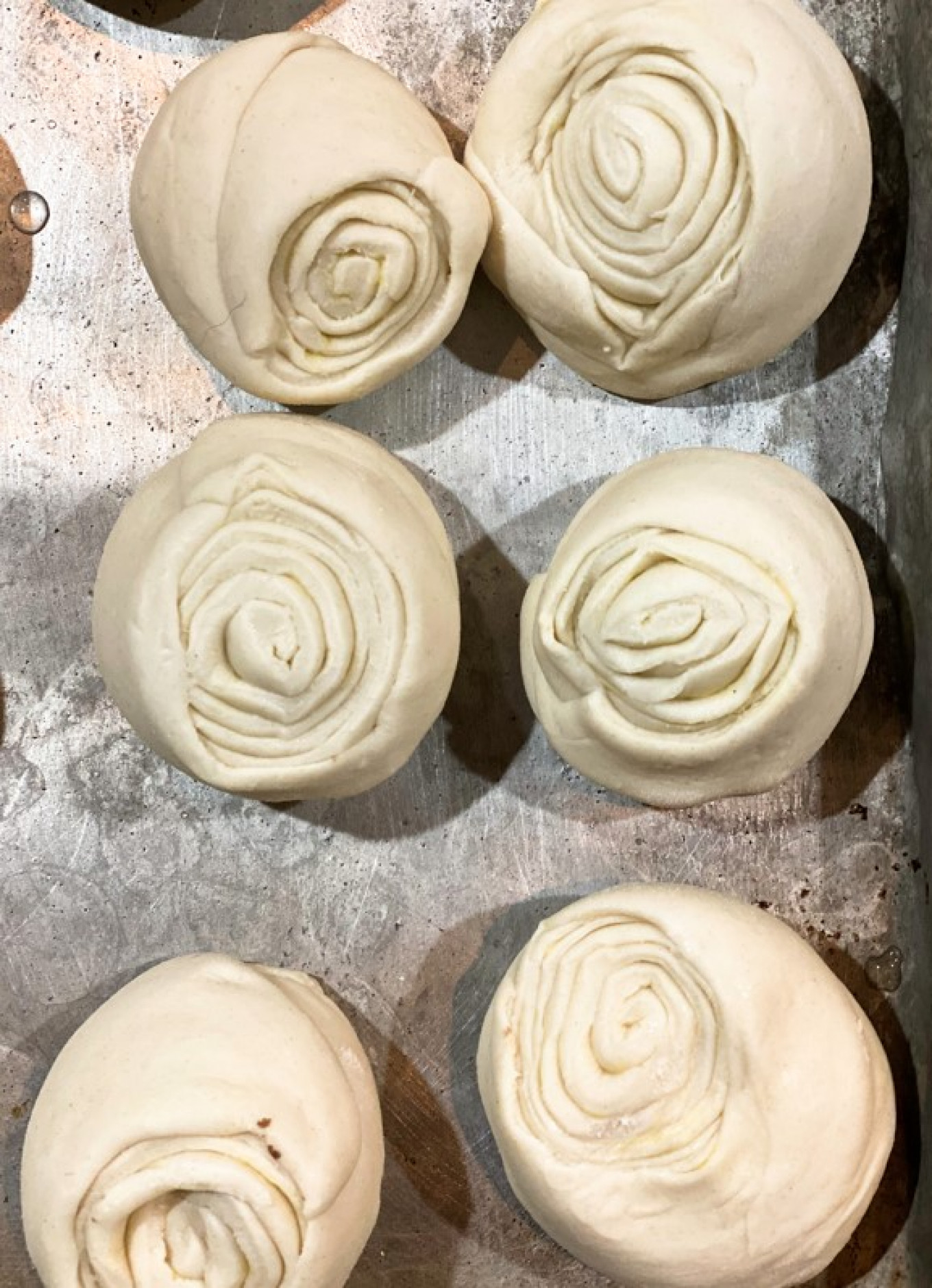
Although I delighted in concocting several excellent filling options almost immediately, it took several tries to get the all-important samsa dough just right. Samsas require layers, but they must be sturdier than puff pastry, with a chewier texture: a dough that is enough to support the meat-based filling inside. To achieve the classic samsa layered crust, the dough is rolled into the thinnest possible layer, smeared with clarified butter, then rolled up into a tight log, which is then cut into pieces to form the outside of the samsa.
The dough I settled on is uncomplicated, particularly if you have a stand mixer, but the key to nailing the texture was allowing the dough to rest three times to increase its hydration and elasticity. Weighing the ingredients rather than measuring them by volume ensures the right ratio. The entire dough-making process can take upwards of 12 hours, which may seem labor intensive, but the reward will be a tray full of steaming hot, irresistible flakey triangles of chewy pastry and delectable fillings. And that beats a case of dodgy street food poisoning every time.
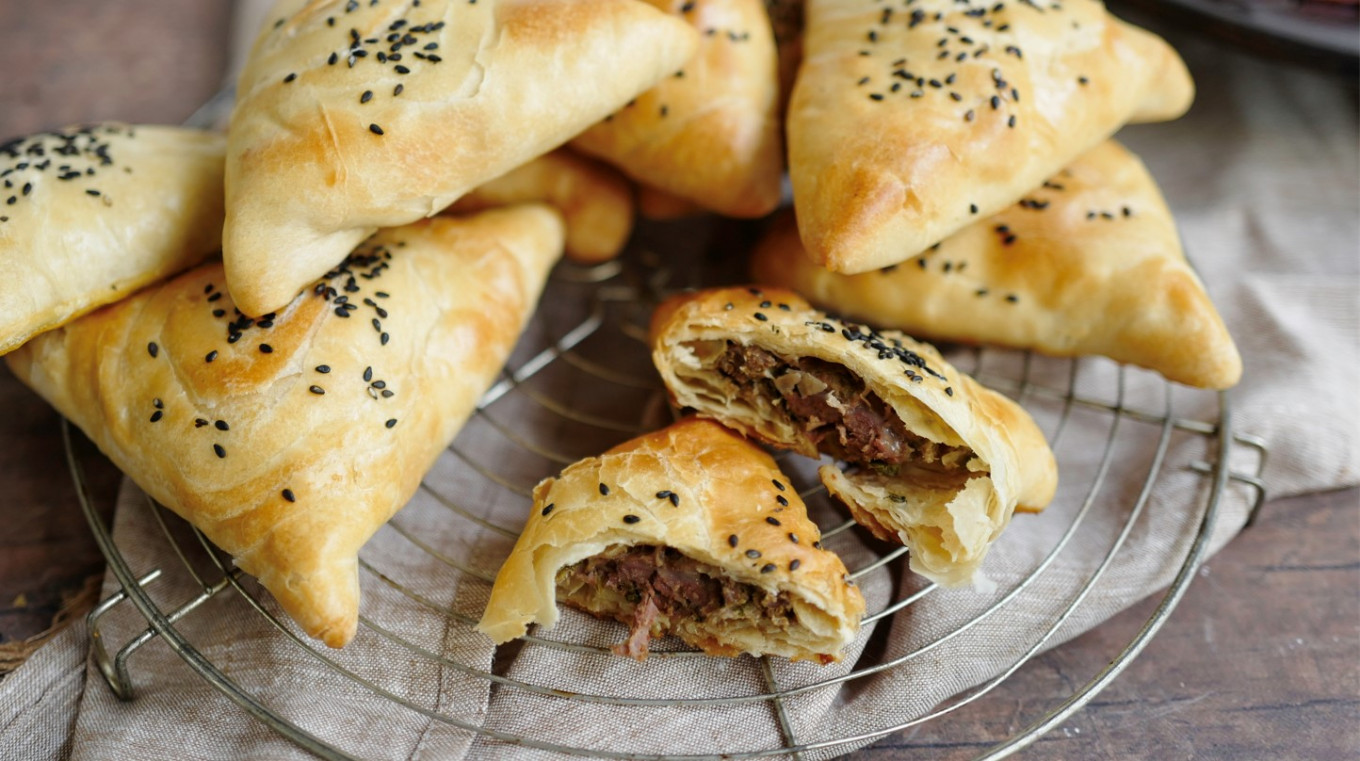
Silk Road Samsas
Ingredients
For the dough
- 1-⅓ lbs. (600 grams) all-purpose flour
- 10-½ oz (300 grams) lukewarm water
- 1 tsp vinegar
- 1 Tbsp salt
- ⅓-cup (76 ml) clarified butter or ghee, melted and slightly cooled
- 1 egg
- 2 Tbsp of nigella or black sesame seeds (optional for decoration)
For the filling
- 10-½ oz (300 grams) lamb shoulder or stew meat
- 1 yellow onion, peeled
- 2 cloves of garlic, peeled
- 1 tsp white pepper
- 1 tsp onion powder
- 2 tsp coriander seeds, crushed
- 1 tsp ground cumin
- 2 tsp salt
- ⅓-cup (76 ml) fresh parsley, finely minced
- ⅓-cup (76 ml) fresh cilantro, finely minced
Preparation
Note: for best results, the dough should rest overnight after it has been buttered and rolled, so begin preparations at least one day before you want to bake and consume the samsas.
- Dissolve the salt and vinegar in the water. Sift the flour into a large mixing bowl or the bowl of a stand mixer fitted with a dough hook. Begin kneading by hand or on the “low” setting of your stand mixer (2-3 on a KitchenAid). Slowly pour in the water two tablespoons at a time, allowing the flour to incorporate the water fully before adding the next amount. The dough will gradually come together, and when it reaches a shaggy consistency, raise the speed to medium and knead for 6-8 minutes until the dough is a well-incorporated, slightly elastic consistency.
- Wrap the dough in plastic wrap and let it rest on the countertop for 30 minutes.
- After 30 minutes have passed, the dough should have a silkier texture and be even more elastic than before. Turn it out on a lightly floured surface and knead for 8-10 minutes. Then wrap it up again and let it rest for another 30 minutes.
- After 30 minutes, turn the dough out on a lightly floured surface and roll it out as thin as you can into a rectangular shape — this may take some time and a long rolling pin, but keep at it. Brush the entire surface of the dough with the clarified butter or ghee.
- Roll the dough from the longer side into a tight log, then twist and pinch it to seal. Cut the dough in half and cut each half in half again. For larger samsas, cut each piece in half again, for smaller samsas, cut into thirds.
- Place the pieces of dough on a baking sheet and cover tightly with plastic wrap. Chill overnight.
- While the dough is chilling, make the filling. Place the lamb in a food processor fitted with a steel blade and pulse several times until the lamb is in small chunks. Add the onion and garlic and dried spices and pulse several times to combine. Just before you are ready to use, fold in the fresh herbs.
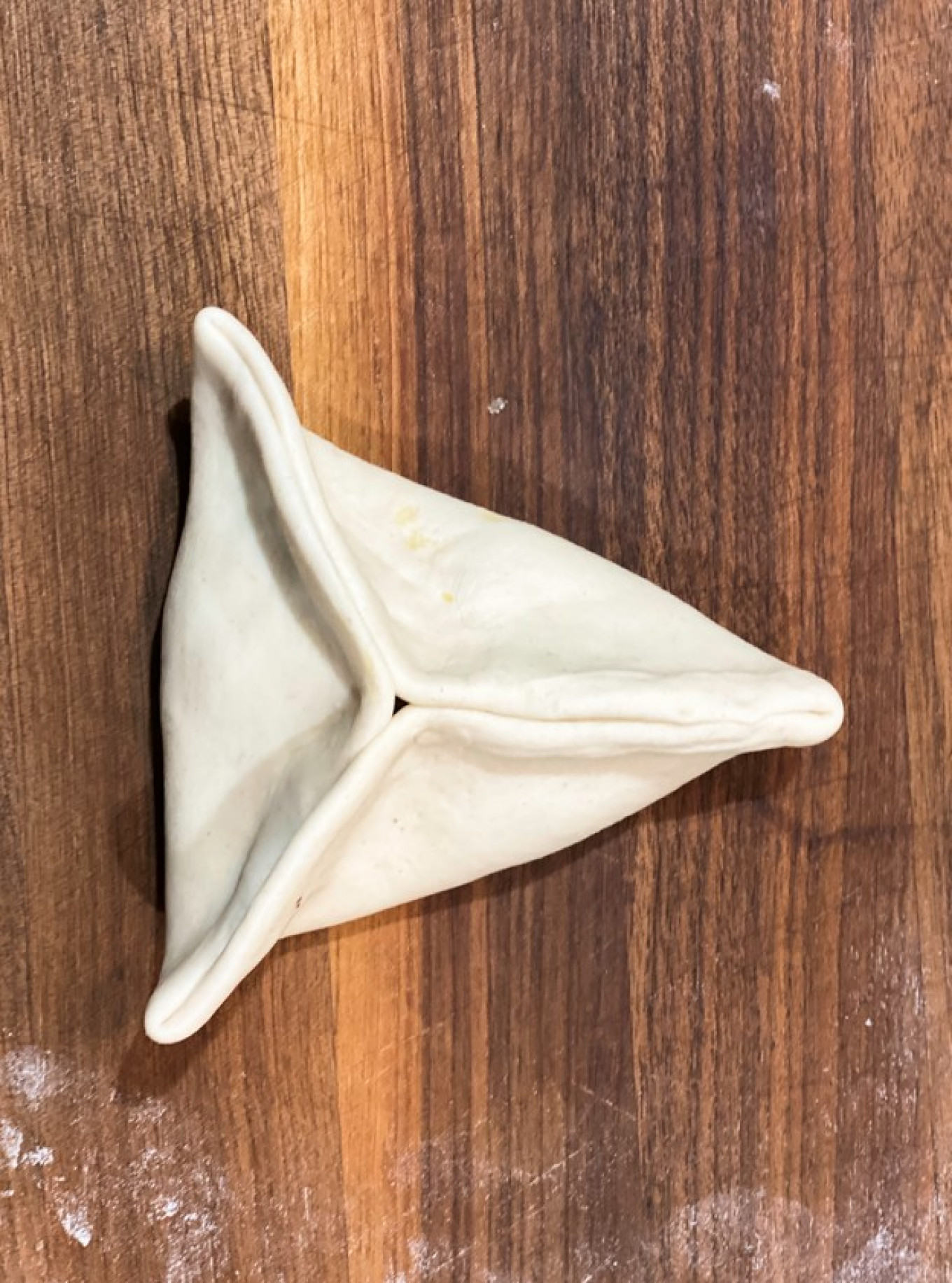
Assemble the samsas
- Preheat the oven to 375ºF (190ºC) and line a baking sheet with parchment paper.
- On a lightly floured surface, flatten each piece of dough into a round disc and then roll it to ⅛-inch thickness. Place a spoonful of filling: 2 tsp if you are making small samsas and 1-½-2 Tbsp if you are making large ones. Form the dough into a triangle or half-moon, taking care to crimp the edges tightly to ensure a good seal.
- Whisk the egg together with 2 teaspoons of cold water and brush each Samsa lightly with the wash — don’t go overboard here or else those carefully constructed pastry layers will be hidden. Sprinkle the samsas with nigella or sesame seeds if desired.
- Bake for 30 minutes (for small samsas) or 40 minutes (for large samsas) until slightly golden on top. Cool on a rack for a least 10 minutes before serving as the filling is very hot. You can store samsas for up to 5 days in the refrigerator, reheating them in the oven or microwave.

Other fillings
Pumpkin and tvorog
Combine pumpkin and tvorog with sage and caramelized onions. Place a small cube of butter inside each spoonful of filling.
Spinach and mushrooms
Sauté 4 cups of fresh spinach (or Swiss chard) and combine with sautéed mushrooms and parsley.
Potatoes and spring onions
Combine leftover mashed potatoes with a bunch of minced spring onions and other fresh herbs. Add feta or a sharp cheddar cheese if desired.

A Message from The Moscow Times:
Dear readers,
We are facing unprecedented challenges. Russia's Prosecutor General's Office has designated The Moscow Times as an "undesirable" organization, criminalizing our work and putting our staff at risk of prosecution. This follows our earlier unjust labeling as a "foreign agent."
These actions are direct attempts to silence independent journalism in Russia. The authorities claim our work "discredits the decisions of the Russian leadership." We see things differently: we strive to provide accurate, unbiased reporting on Russia.
We, the journalists of The Moscow Times, refuse to be silenced. But to continue our work, we need your help.
Your support, no matter how small, makes a world of difference. If you can, please support us monthly starting from just $2. It's quick to set up, and every contribution makes a significant impact.
By supporting The Moscow Times, you're defending open, independent journalism in the face of repression. Thank you for standing with us.
Remind me later.



